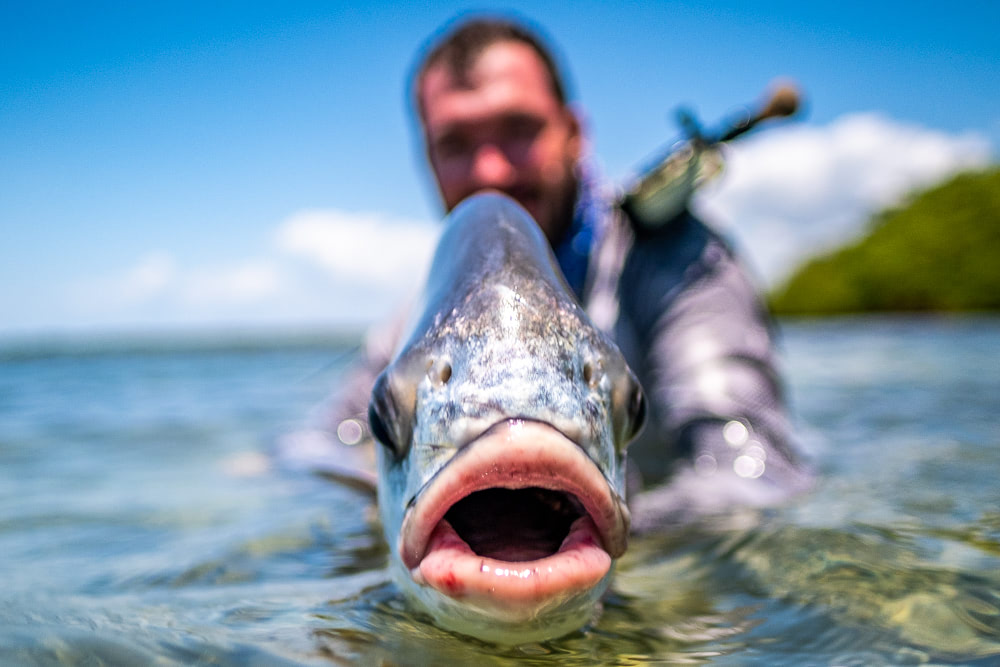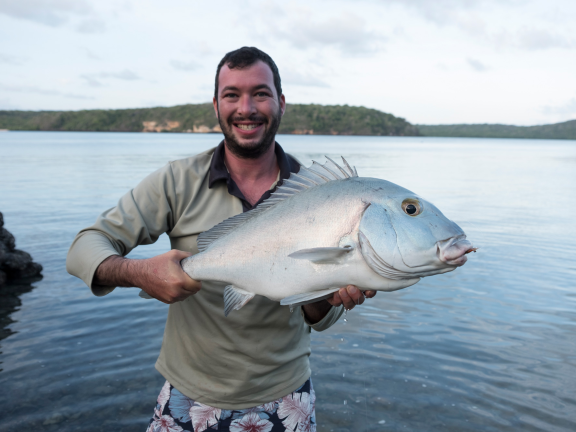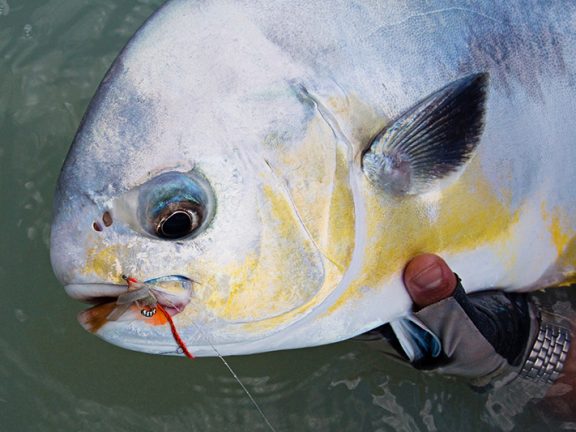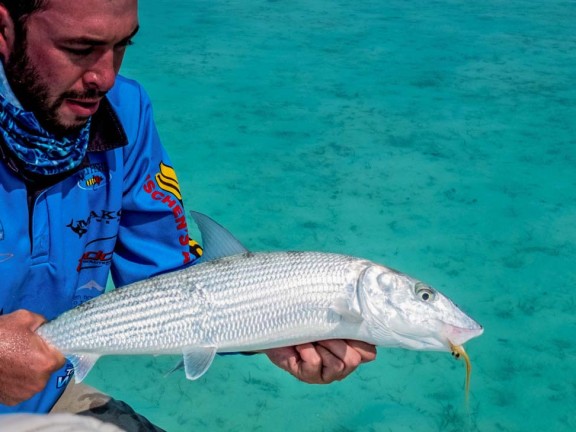Flats fishing is the pinnacle of saltwater fly fishing
It is tough, rewarding, and intimate. The angler must make countless decisions, often with little time to process. To become a good flats fisherman there are a number of skills and techniques an angler must learn.
While some take practice, others require understanding and focus. Here are some of my top tips to improve your catch rates on the flats:
1
When you have no idea which fly to use, consider sink rates and try to match the colour of your fly with the bottom.
2
Smaller is better! (usually). I try and use the smallest fly that I think will get noticed. Smaller flies hide imperfections better and will also make less of a splash when hitting the water.
3
Test the sink rate of your fly before casting. The shallower the water, the more cautious the fish will be, ideally your fly should hit the bottom in 2-3 seconds. I really only carry 3-4 fly patterns when on the flats, however, I will have the same patterns tied in a number of different weights and in at least two if not three sizes.
4
Rub new flies in sand and sea grass to get rid of smells.
5
Forget the hype. While ultra fast action rods are useful on windy days, they can be a pain to cast for anglers who are not used to them. If you are more comfortable with a medium-fast rod, stick with that. Most of the fish you will be casting to will be within 20-40 feet.
6
Calibrate your casting and distances with your guide before you start fishing. Throw out a couple practice casts at 10’, 30’ and 50’. Ask your guide how far he would call each of your casts. Keep casting and asking until you and your guide are on the same page.
7
Be ready! The correct ready position for flats fishing is fly in hand with approximately 5-10’ of fly line out of the guides (dependant on cast length and wind conditions). Your fly line should be lying untangled on the deck, or neatly behind the casting platform unless you are using a stripping basket. You should be standing straight, looking forwards, and scanning the water approximately 50’ – 100’ in the direction the boat is moving.
8
Stay calm and have fun. I know you want to catch fish, but flats fishing can be frustrating and it’s definitely not the easiest method of fishing. Don’t beat yourself up if you miss a fish, there will be more, I promise.
9
When spotting fish, train your eyes to focus “through” the water not “at” it. If you are staring at the surface of the water, or at the bottom, you will not see fish. You must look past the first plane (the surface of the water) and focus behind it.
10
Don’t just look for fish. Keep your eyes open for mud ups, feed marks, signs of life, small channels, or structure on the flats. All of these will give hints as to where fish might be.
11
Make your first cast count. Don’t start casting until you are locked onto your fish. Instead, point your rod tip and ask your guide to direct you. It is better not to cast than to blow a cast.
12
Don’t cast at spooked fish. They won’t bite and there is a chance you will spook other fish as well. Furthermore, you won’t be ready if a fish does come up.
13
Strip with you rod tip slightly underwater, this will keep strips “sharp” and give you a better connection with your fly.
14
On overcast days, find a flat with a bottom colour that brings out fish, or target schools and tailing fish; these days will be tough, but they are still fishable. Move slower and try to intercept and ambush fish along edges and channels rather than actively stalking and hunting over large flats.
15
Calm conditions call for longer leaders, lighter flies, and more delicate casts. Windy days call for the opposite; shorter leaders, tighter casts, and heavier flies.
16
The wind is your friend, but fear the darkness. Master bone fishing guide Andy Smith told me this a number of years ago, and it still stands true — moderate wind is a good thing — it will help mask your profile and make fish much less spooky. If you are having problems casting on windy days, consider a casting lesson, or go outside and practice your casting on a windy day. Make friends with the wind and you will be on your way to becoming a true flats master. On the other hand, cloud cover is your real enemy, it will make fish harder to spot and offers little stealth advantage.
17
Strip strike! Learn it, love it, do it! There is nothing more frustrating than watching an angler blow a large bonefish or permit with a trout strike. Flats fish also peel off line much quicker than trout, so once your hook is set, make sure to clear your line properly!
18
Don’t touch your drag. Let your guide set it and don’t play with it unless you really know what you are doing. If a fish is heading for a mangrove, turn him with side pressure. If this doesn’t work, in a hail mary situation you can try lightly palming the spool.
19
Once you have a fish hooked, be aware of your surroundings. If you’re on a featureless flat, holding the rod straight at a 60 degree angle works well, but if you’re surrounded by coral heads and small mangroves, you may have to hold the rod high above your head. If you’ve got a monster hooked and you have to chase him into deeper water, side pressure can be your friend.
20
Lastly, listen to your guide. You may not always get along, and at times you may doubt their competence, but at the end of the day they spend a lot of time out on the water and you will not catch fish without their help. Teamwork and communications are essential on the flats so try your best not to question their decisions. If you really can’t get along, kindly request a different guide the next day.



